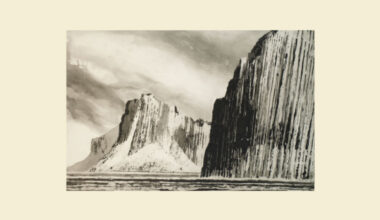Get Carter

After some eight years gestating in his creative pipeline, Chris Carter’s latest solo flight is ready and, true to form, it raises the bar again for that potentially hazardous beast, the electronic album.
As a renowned self-confessed boffin, Carter may have been expected to emerge from his Norfolk home studio with a clutch of diligently honed noodles. Instead, using his home-made methods and often machinery, he bursts to the surface like a pearl diver brandishing dazzling gems, no less than 25 relentlessly astonishing works of unfettered rough genius
With the electronic blueprints he started developing over 40 years ago with TG and continued to build on with life-long partner Cosey Fanni Tutti now very much a part of electronic music’s DNA, Carter began laying foundations for this, his sixth solo album before his TG comrade Peter “Sleazy” Christopherson died in 2010. The pair had been working together developing a new style of “artificial singing” by electronically transforming their own and other voices. A long grieving process impacted on the project before Carter finally returned to it, finding himself forging compelling new templates imbued with rare poignant depth as he subliminally created a monolithic eulogy to his departed friend that celebrated his larger-than-life spirit.
These vocal techniques are used to stunning wordless effect and haunt the album with their other-worldly presence; whether it’s ‘Nineteen 7’ planting its distorted harangue over robo-stick insect proto-electro, ‘Pillars Of Wah’ forging a new broken-beat electronic shoegaze with female twists curling over Funkadelic bass-grime, or the weightless space choir on ‘Time Curious Glows’ recalling early 90s Frankfurt ambient ghosts with eerie luminous calm.
Carter says he was also influenced by BBC Radiophonic tracks and old English folk music, a “guilty pleasure” that fits the idyllic Norfolk countryside outside his home studio. He likens this arcane folk to nursery rhymes in its simplicity (maybe morphic resonance from the house’s previous incarnation as a school?). For instance, ‘Cernubicua’ sends ethereal female vocals over fathomless swells like a ghostly fragrance in a perfect balance of sad reflection and questing optimism, although the haunting vocodered vocal over the oaken synths and translucent grind of ‘Rehndim’ evokes the far east where Sleazy spent his final days.
Often, Carter sketches a mood before colouring it in with the rich textures and fragmented melodies that dominate the album. In this respect, there’s some similarity to Martin Rev’s phenomenal ‘Demolition 9’ album last year, which also presented a large parade of short pieces pinpointing a specific mood, action or object. Like Rev, not a second or sound is superfluous to the action, each track carrying its own distinctive character.
The 25 pieces here mainly hover around the two-minute mark, ‘Modularity’ its epic at four minutes and 49 seconds. Like several other tracks, it unleashes a robust strain of primal acid house reaching back to Chicago’s experimental early days as juddering synth motifs tangle with radioactive baboon’s bottom frequencies and mangled intoning. The chattering synth on ‘Tangerines’ could have graced an early 80s New York electro-boogie dub before entering the extra-terrestrial krautrock car wash.
The unearthly delights are many in Carter’s musical garden. The astoundingly moving ‘Field Depth’ finds itself in a pulsing oxygen chamber while outside in the village square a spectral brass band mourns. ‘Corvus’ (Latin for “raven”) wakes a sleeping Japanese movie monster with subterranean drones and human giant’s breath.
On ‘Tones Map’, extra-terrestrial techno throbs under the floorboards before breathtaking strings rise and drape everything in dense cinematic beauty. ‘Dust & Spiders’ explores a dank, dripping cellar on a reversed drum tattoo; ‘Lab Test’ unearths another proto-electro-acid house hybrid as guttural voices mutter; ‘Shildreke’ crawls from beneath a slow-mo heartbeat creeper into Drexciya-style electro; ‘Uysring’ turns one of Saturn’s rings into a yellowed fly-splattered lamp-shade sucked into a swirling black hole; ‘Noise Floor’ gets even darker as its malevolent house hump is slashed with terror noise and sinister slowed-down voices; ‘Post Industrial’ uncorks a butt-shaking machine groove in a cold, abandoned warehouse with steamhammer iron bar rumble; ‘Hobbs End’ glides over Norfolk fields besieged by crows and bowel-evacuating bass frequencies and ‘Ars Vetus’ conjures a giant’s chemical toilet buckling under heavyweight beats before heavenly voices open up a glittering interstellar gladiatorial arena.
When ‘Inkstain’ brings down the curtain with luminescent keyboards and ethereal oriental vapour trails, it could be one last goodbye to Sleazy who would have loved this fearless new world that he helped to create, a world that his old friend has brought home with such flying new colours, creating what is a new electronic masterpiece.





